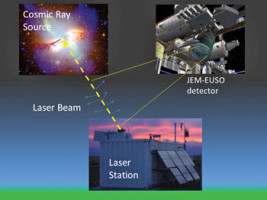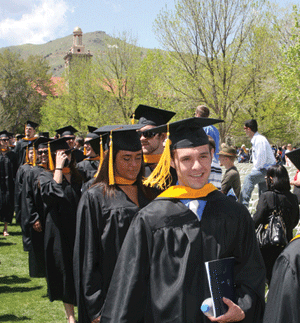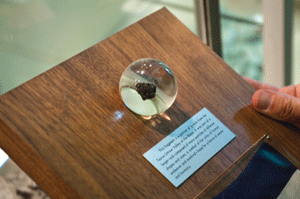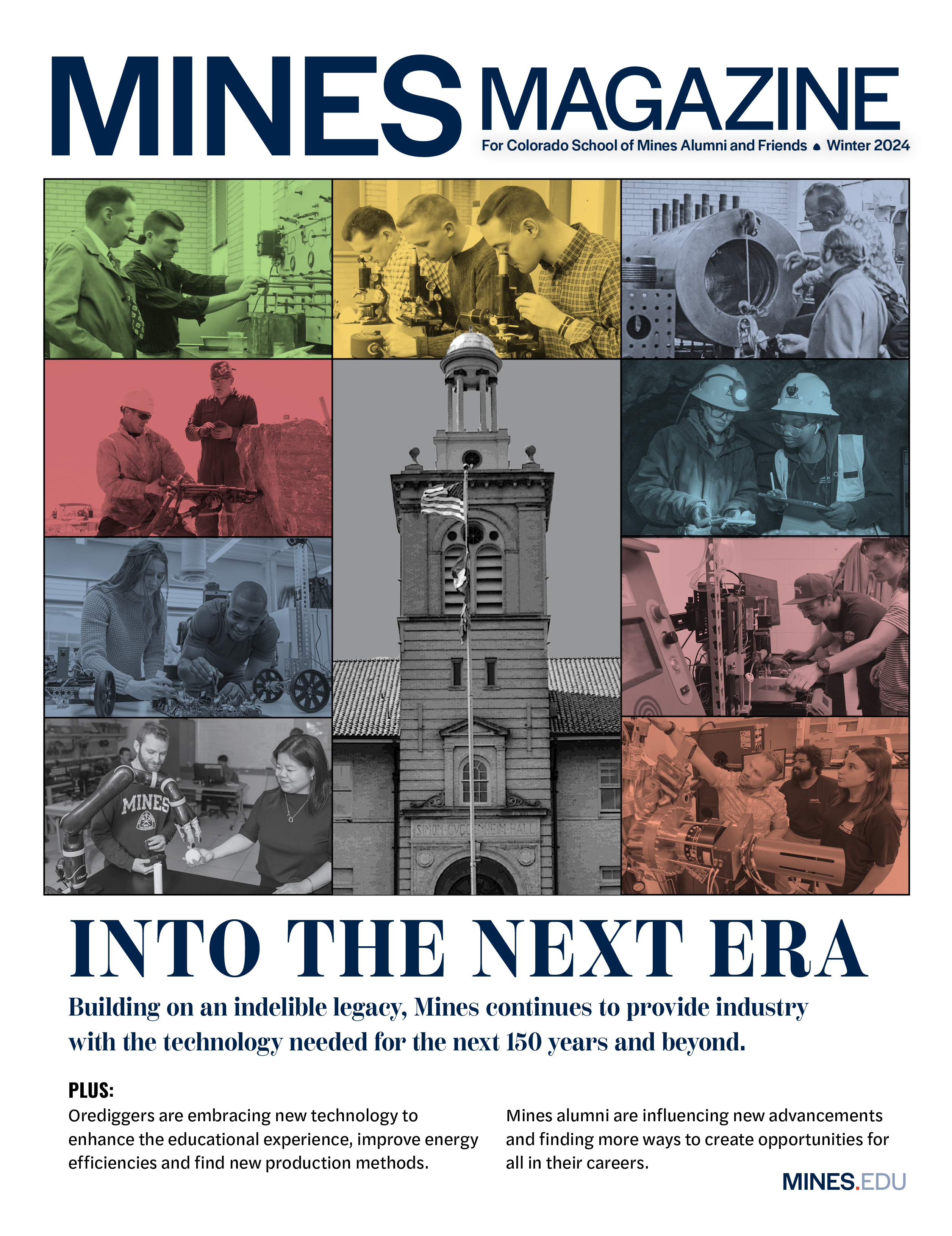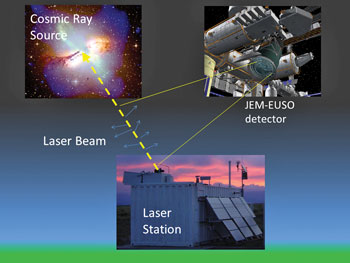
Global Light System locations (identified as a laser station here) provide a benchmark for the space-based telescope used to detect high-energy cosmic rays.
Ultra-high-energy cosmic rays (UHECRs) carry an unfathomable amount of energy, about 40 million times as much as the highest-energy protons produced in man-made particle accelerators. For decades, physicists have sought to understand more about them, particularly where they come from and what they are made of, but UHECRs are elusive; on average, fewer than one hits the Earth per square mile, per century. Lawrence Wiencke and Fred Sarazin, both associate professors of physics at Mines, have long been involved in the Pierre Auger Observatory in Argentina, which monitors UHECRs over a 1,200-square-mile area. Now, thanks to a $1.7 million share of a $4.4 million NASA grant, they are helping to establish an observatory in space, which will record about 100 times as many UHECRs as the South American facility.
Since UHECRs are subatomic and move at close to the speed of light, scientists don’t try to detect them moving through space. Instead, they interpret the shower of particles and electromagnetic radiation, and the accompanying track of ultraviolet fluorescent light created when an UHECR plows into the atmosphere.
This new initiative, called the The Extreme Universe Space Observatory on board the Japanese Experiment Module (JEM-EUSO), uses the track of UV light to determine an UHECR’s energy and trajectory through space. However, calibrating the track of UV light is a challenge, since it is influenced by constantly changing atmospheric conditions.
That’s where the Mines team is making an important contribution. Wiencke and Sarazin are designing a ground-based network of flashing lights and UV lasers to provide a benchmark for the UV light detected in space. “The Global Light System (GLS) locations need to be representative of the different climates around the world, because the way the atmosphere reacts to the impact of cosmic rays depends upon the general properties of the atmosphere where they occur,” explains Sarazin.
By plotting the variations in light detected in space from identically calibrated light sources situated in a wide range of climates around the globe, scientists can better correct for atmospheric variability when interpreting UV light detected in space from an UHECR. Similarly, UV light detected from a UV laser beam with a known trajectory gives scientists a way to refine their interpretations of an UHECR’s path through space. While there’s a big difference between light from a ground-based laser beam and the UV track created by an UHECR, Wiencke says the variability is similar.
Assisted by partners at the Marshall Space Flight Center and the University of Alabama in Huntsville, the Mines team will select suitable locations and develop, install and maintain laser stations for the GLS array.
In all, 13 countries, 77 institutions and about 280 researchers are helping prepare for the telescope’s ultimate deployment, currently scheduled for 2017. In addition to those previously mentioned, U.S. partners include the University of Chicago, the University of Wisconsin-Milwaukee and Vanderbilt University.

